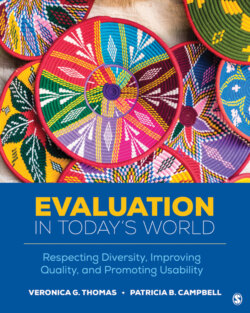Читать книгу Evaluation in Today’s World - Veronica G. Thomas - Страница 38
На сайте Литреса книга снята с продажи.
Project DARE (Drug Abuse Resistance Education)
ОглавлениеProject DARE is one of the most widely used substance abuse prevention programs targeted at school-aged youths. It has been the country’s largest single school-based prevention program. Multiple evaluations and meta-analyses have found DARE to be ineffective, yet it continues to be widely used, paid for by federal funds (West & O’Neal, 2004). In 2017, then attorney general Jeff Sessions supported DARE because he “firmly believed” in its effectiveness, regardless of what the data said. Knowing that the program has been found to be ineffective, some school districts continue to use it for a variety of reasons including their belief that no short-term program can change students’ drug-taking behavior and that, if it improves student/police relationships, that is enough to keep it going (Ingraham, 2017).
While some of the reasoning behind these examples is political, there can also be what Tom Kibler (personal communication, first quoted in Campbell, Hoey, & Perlman, 2001, p. 34) described as the “pure of heart model” influencing the decisions. The model is based on the premise that “since my heart is pure and my cause is just and I work really hard at it, the change I am seeking will happen.” The pure of heart model is often held by caring people who are trying to help others who feel strongly what they are doing is right. If the data don’t support that, then the data are wrong. As one program leader explained, “We are doing this on faith and if you don’t believe in it, **** you” (Campbell et al., 2001, p. 35).
There can be issues with doing things on faith. Even with the best of intentions, the results of those efforts can be neutral or even negative. For example, one evaluation that I, coauthor Campbell, did found that doing hands-on science activities created by teachers or by after-school leaders caused students to become more stereotyped and limited in their opinions of who could do science. A second program to encourage women to continue on in their engineering programs reinforced rather than overcame stereotypes, with some women in the program coming to feel that it existed because women weren’t as good as men in engineering. As one participant explained: “[Engineering] theory is easier for boys. That is why they put us together [in the special program]” (Campbell & Hoey, 2000, p. 20). No one wants to hear negative outcomes, but problems can’t be fixed unless they are found and acknowledged.
